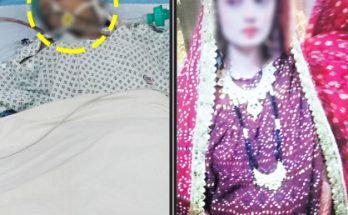Islamabad: Many people develop a fungal nail infection at some point in their life. It’s not usually serious, but can be unpleasant and difficult to treat. The infection develops slowly and causes the nail to become discolored, thickened, and distorted. Toenails are more frequently affected than fingernails. The medical name for a fungal nail infection is onychomycosis.
Advertisement
Fungal infections of the toenails are very common, those of fingernails are less so. Both are seen most often in the elderly, those with impaired immune systems, and in people with diabetes and poor peripheral circulation. A warm, moist environment helps fungi to grow and cause infection. Wearing occlusive footwear or using shower stalls, bathrooms or locker rooms can increase the risk of fungal infections.
Foot and Nail Care at Home

husband-wife
Happier and Healthier
Signs and symptoms of a fungal nail infection
Fungal nail infection may not cause any obvious symptoms at first.
As it progresses, the infection can cause:
Discoloration of the nail – it may turn white, black, yellow, or green
Thickening and distortion of the nail – it may become an unusual shape or texture and be difficult to trim
Pain or discomfort – particularly when using or placing pressure on the affected toe or finger
Brittle or crumbly nails – pieces may break off and come away completely
Sometimes the skin nearby may also become infected and be itchy and cracked or red and swollen.
Treatments for fungal nail infections:
Treatment isn’t always needed for a mild fungal nail infection because it’s unlikely to cause any further problems and you may feel it’s not worth treating.
Whether you decide to have treatment or not, you should still practice good foot hygiene (see below) to stop the infection from getting worse or spreading to others.
Speak to your GP or pharmacist if you’re bothered by the appearance of the affected nail, or it’s causing problems such as pain and discomfort. They’ll probably recommend:
Antifungal tablets – tablets taken once or twice a day for several months
Antifungal nail paints – special paints applied directly to the nail over several months
Nail softening kits – where a paste is used to soften infected parts of the nail before they’re removed with a scraping device
A procedure to remove the nail completely may be recommended in severe cases. Laser treatment, where a high-energy laser is used to destroy the fungus, is also an option. But this is only available privately and can be expensive.
How do you get a fungal nail infection?
Most fungal nail infections occur as a result of the fungi that cause the athlete’s foot to infect the nails. These fungi often live harmlessly on your skin, but they can sometimes multiply and lead to infections. The fungi prefer warm, dark, and moist places like the feet.
You’re more likely to get a fungal nail infection if you:
Fungal nail infections can be spread to other people, so you should take steps to avoid this (see below) if you have an infection. source

